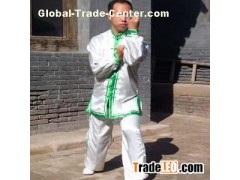Xing Yi Quan is based on twelve distinct Animal Shapes[37] (of which, ten animals are more common - see table below). Present in all regional and family styles, these animal movements emulate the techniques and tactics of the corresponding animal rather than just their physical movements. Many schools of Xing Yi Quan have only small number of movements for each animal, though some teach extended sequences of movements.The ten common animals ChinesePinyin Bear熊XióngIn Xing Yi, "the Bear and Eagle combine", meaning that the Bear and Eagle techniques are often used in conjunction with each other.[38] There is a bird called the "bear eagle", which covers the characteristics of both forms. The Eagle is a Pi Quan variation. It mimics the downward clawing action of this bird.Eagle鷹YīngSnake[39]蛇ShéIncludes both Constrictor and Viper movements.Tiger[40]虎HǔFeatures lunging with open-handed clawing attacks mimicking the pounce of a tiger.Dragon[41]龍LóngThe only "mythical" animal taught (except in those family systems where the phoenix is one of the 12 animals). In some lineages it is practiced separately from tiger because they are said to clash (this is a minority opinion).Chicken[42]鷄JīMimics the pecking movement of a chicken and the flapping of its wings. This form also mimics the quick and aggressive combat style of the rooster.Horse[43]馬MǎCombination of Pi and Heng movements that mimics the action of a rearing a horse.Swallow[44]燕YànFollows the swift and random movements of the swallow by rotating position and circling the enemy with strong but quick foot movement. May refer to the purple swamphen.Goshawk[45]鷂YàoThis can mean 'Sparrowhawk,' though the more common word for "Sparrowhawk" used to be Zh
Xingyi Animal Forms

Kunlun International Martial Arts Academy
kungfu,study kungfu, shaolin kungfu, learn kungfu,







